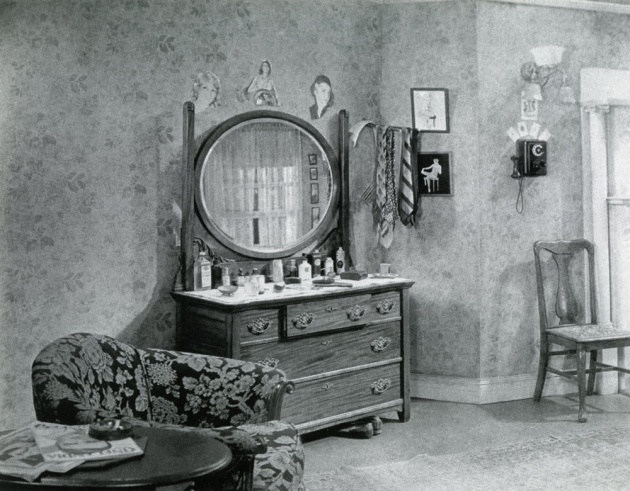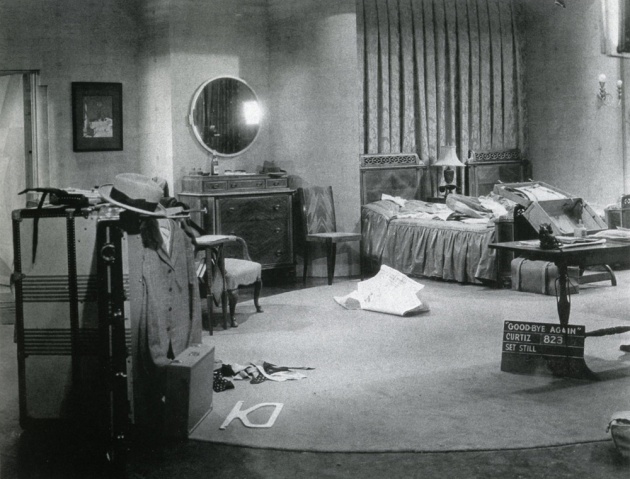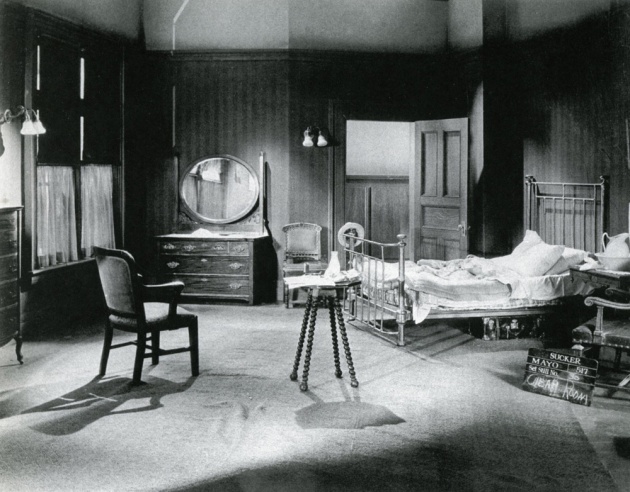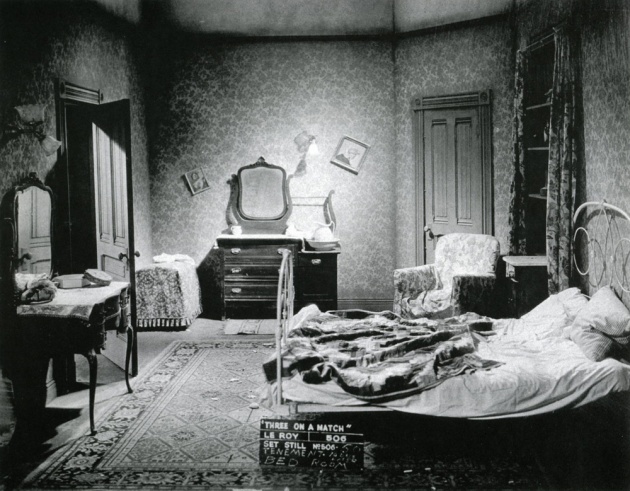John Divola
Continuity
January 7-30, 1999
Some years ago I began to collect Hollywood set stills simply because I considered them fascinating and beautiful. These photographs are contact-prints from 8×10-inch negatives and are, in terms of craft alone, exceptional. They also intersect with my own work as an artist, which has involved photographing scenes specifically fabricated for the camera, and has often addressed issues of absence. Over the past several years I have exhibited these set photographs as clusters of original prints organized by subject. These images are from the installation “Hallways.”
The set stills that comprise these installations were made primarily for Warner Brothers Studios between 1931 and 1934. This is shortly after the introduction of sound to films and is the era when cinema rapidly evolved into a ubiquitous fact of popular culture. Since film stock was relatively insensitive to light, the movie set need to be very brightly lit. Sets were almost constructed on soundstages where the lighting could be controlled. Even the most mundane and generic rooms were previsualized, constructed and completely artificial.
I am interested in how these set stills collectively construct a fictive sense of the normal. For the viewer, these locations are “known” as attributes of a passively received representational knowledge. Like so many of the images upon which we base our contemporary sense of reality, these images offer a representational ground that has a familiarity born of repeated viewing and is anchored by the implicit authority of the photographic. In the aggregate, the millions of such images seen in a lifetime form the internal visual index of what we accept to be real.
Since these photographs were only intended for practical applications, they were not attributed to individual photographers. Sets were constructed from the descriptions of authors and the constructions of designers, art directors, studio executives, directors, and ultimately filtered through the sensibility of anonymous studio photographers. With my presentations of these photographs, I become one of many participants within an extended, complex, and problematic matrix of authorship.




